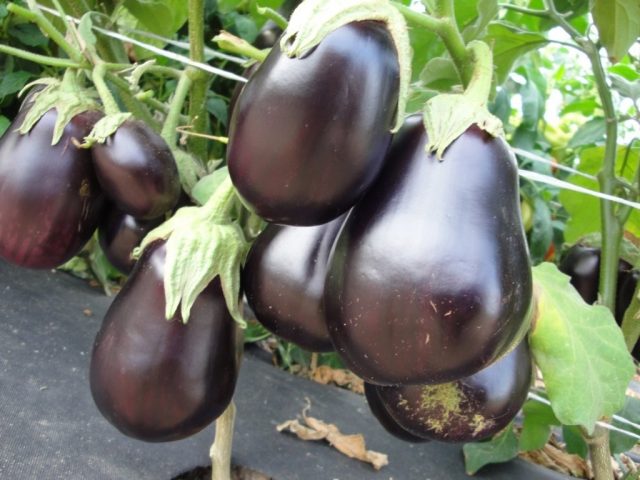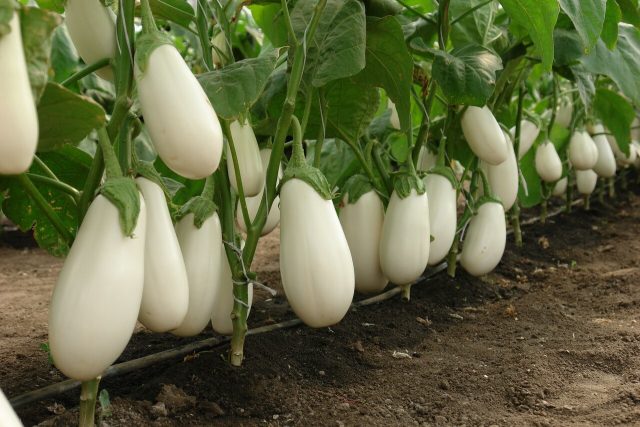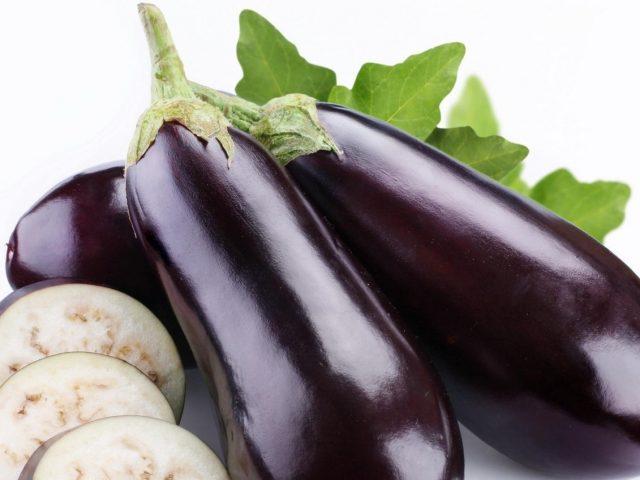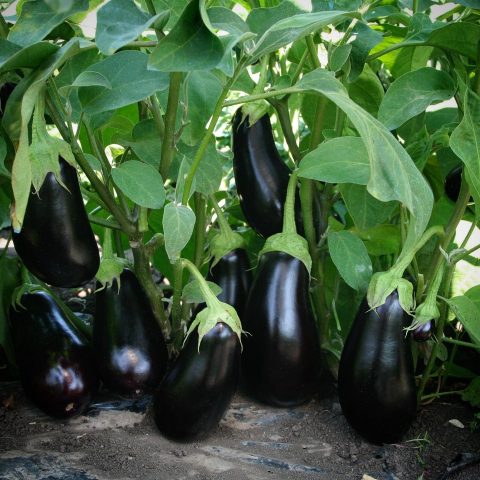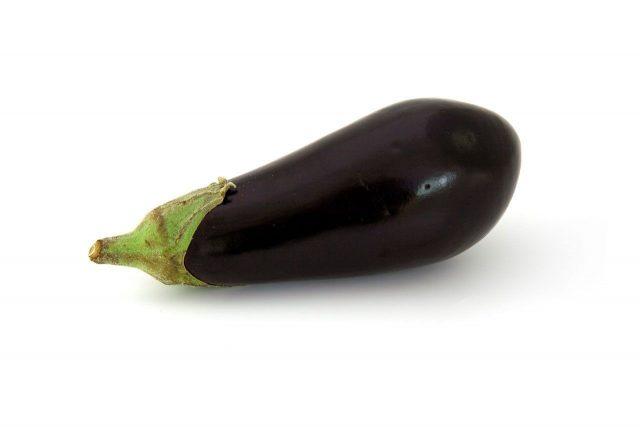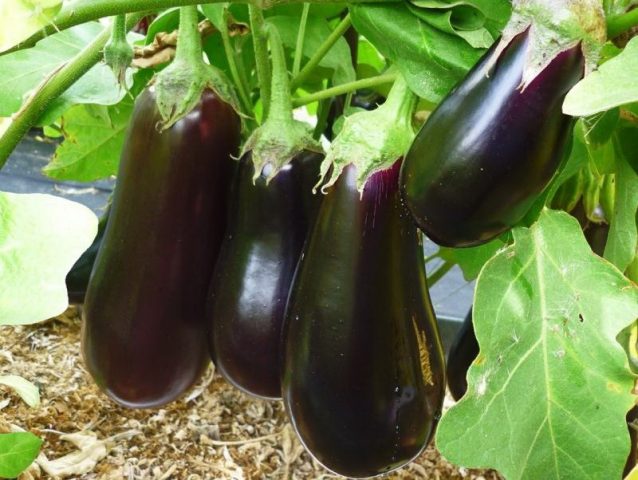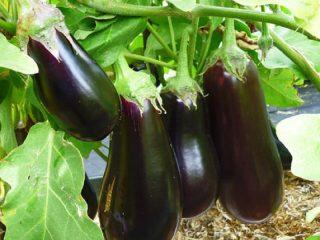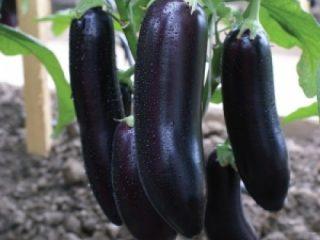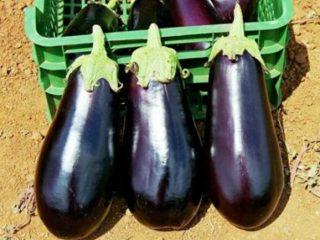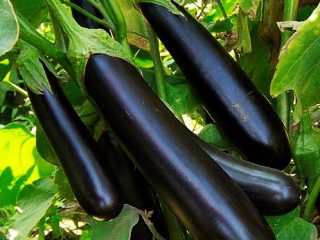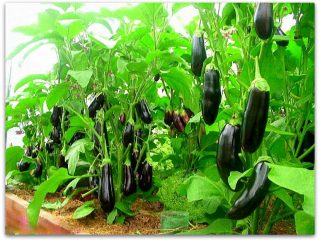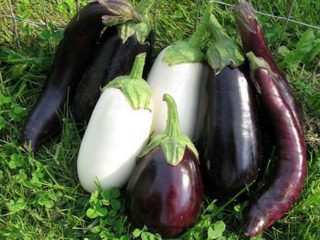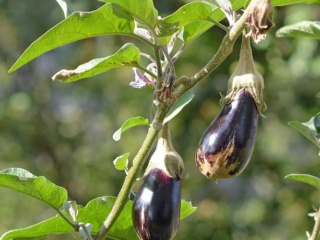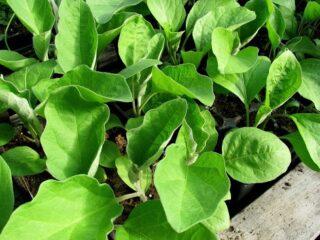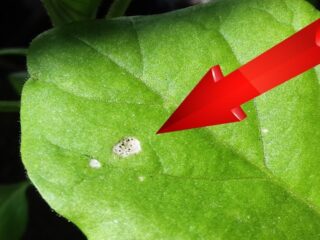Content
Thorns on eggplant leaves are not such a rare phenomenon. Their formation raises bewilderment and questions among gardeners. After all, it is unknown what this symptom is associated with, and whether it is possible to eat fruits collected from such bushes. Therefore, it is worth understanding the reasons for the appearance of thorniness, in which types of crops it manifests itself to a greater extent, and what it means.
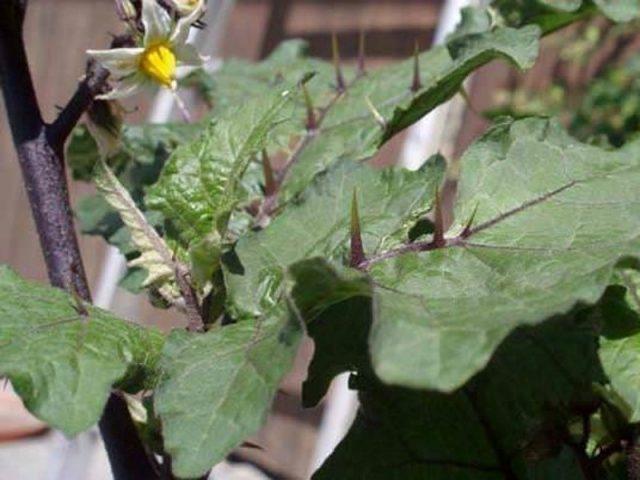
Spikes come in different sizes
Why do thorns appear on eggplant leaves?
Eggplant is an ancient vegetable crop. And it is its wild forms that are characterized by the presence of thorns. This is explained by the plant’s protection from attack by caterpillars, which can cause serious damage to the bushes.
Over time, increased interest in culture became the impetus for the breeding of new species. Breeding work was aimed at increasing the productivity of the crop, improving the consumer qualities of its fruits and reducing the level of thorniness, which greatly simplifies care. However, even in modern varieties and hybrids you can sometimes see thorns. This is due to the predominance of genes from the wild form of the crop. Otherwise, eggplants with spines on the trunk are no different from other plants. Their fruits are completely edible and do not lose their taste.
Prickliness scale
Eggplant belongs to the category of vegetable crops that require the formation of bushes. And the presence of thorns significantly complicates this process. Therefore, to simplify the task of choosing a variety, a culture thorniness scale was developed. It indicates all possible options for the presence of thorns. Therefore, when purchasing, you need to pay attention to the designations indicated in the characteristics of a particular variety.
Scale of existing types of eggplants with thorns on the leaves, calyx and stem in points:
- 0 – no spines;
- 1 – single soft ones on the cup;
- 2 – coarse single ones on the calyx,
- 3 – single coarse ones on the calyx, rare soft ones on the plates;
- 4 – single rough ones on the calyx and leaves, rare soft ones on the stem;
- 5 – average amount of rough on the calyx, rare hard on the stem and plates;
- 6 – average number of rough ones on the cup and plates, and rare hard ones on the stem;
- 7 – average number of rough ones on all parts of the plant;
- 8 – often rough on the calyx and moderately hard on the plates and stem;
- 9 – rough, dense on all parts of the plant.
What varieties of eggplants have spines on their leaves?
There are several varieties and hybrids that are prone to thorniness. Therefore, you should study them in advance in order to take this feature into account when caring for them.
Types of crops with thorns:
- Nutcracker. Early maturing hybrid form of culture. The first fruits ripen a month and a half after planting. They have a uniform purple color and accumulate bitterness.Therefore, before cooking, they need to be pre-soaked in salted water.
Nutcracker eggplants are round and barrel-shaped
- Ping pong. A hybrid that stands out for its unusual white fruit color. The height of its bushes reaches 60-70 cm. Suitable for growing indoors. Thorns are present on the leaves and calyx in moderate quantities. The growing season of the hybrid is 110 days.
Ping Pong fruits contain many seeds.
- Purple miracle. Hybrid early-ripening form with sparse thorns. Suitable for growing in open and protected ground. The growing season after planting seedlings is 90-100 days. Productivity reaches 7-8 kg per 1 sq. m. Eggplants, smooth, cylindrical, dark purple in color. The crop is suitable for long-term storage and tolerates transportation well.
The purple miracle has increased endurance
- Hippopotamus. Mid-season hybrid, characterized by high yield. The growing season is 110-112 days. Sparse spines are sometimes present on the leaves. Fruits weighing 250-300 g, pear-shaped. The pulp is dense, without voids, yellowish-white in color. When ripe, the peel becomes a rich purple hue and shiny.
The yield of Hippopotamus is 2.5-6 kg per bush
- Madonna. An early ripening variety with sparse thorns. Forms medium-sized fruits, oval-curved. The pulp is loose, greenish in color. The average weight of eggplants is 300 g. The yield of the Madonna variety reaches 17.3 kg per 1 sq. m. There is no bitterness in the fruits. The variety is excellent for preservation.
Madonna has an extended period of fruiting
- Universal 6. An old time-tested variety of crop, which also sometimes has thorns on the leaves.It was included in the State Register back in 1966 and still does not lose its relevance. The variety is mid-early, drought-resistant. Suitable for growing in open ground and greenhouses. The height of the bushes reaches 60 cm. Eggplants are elongated and club-shaped, weighing about 200 g. When ripe, they become a uniform purple hue. The pulp is whitish, dense, with small seeds, without bitterness.
Universal 6 has excellent taste
Conclusion
Knowing that the thorns on eggplant leaves do not in any way affect the productivity of the variety or its taste, you can be sure that if you follow all the rules of care, it is easy to get a high-quality harvest. But when choosing a species with thorns, you need to take precautions so as not to injure your hands. Otherwise, these plants will not cause much trouble to the gardener.
